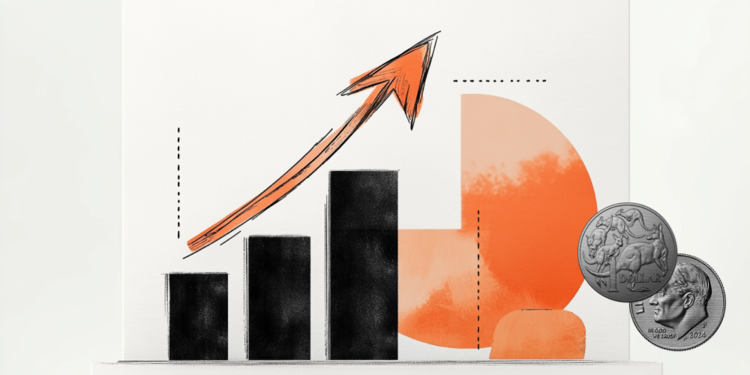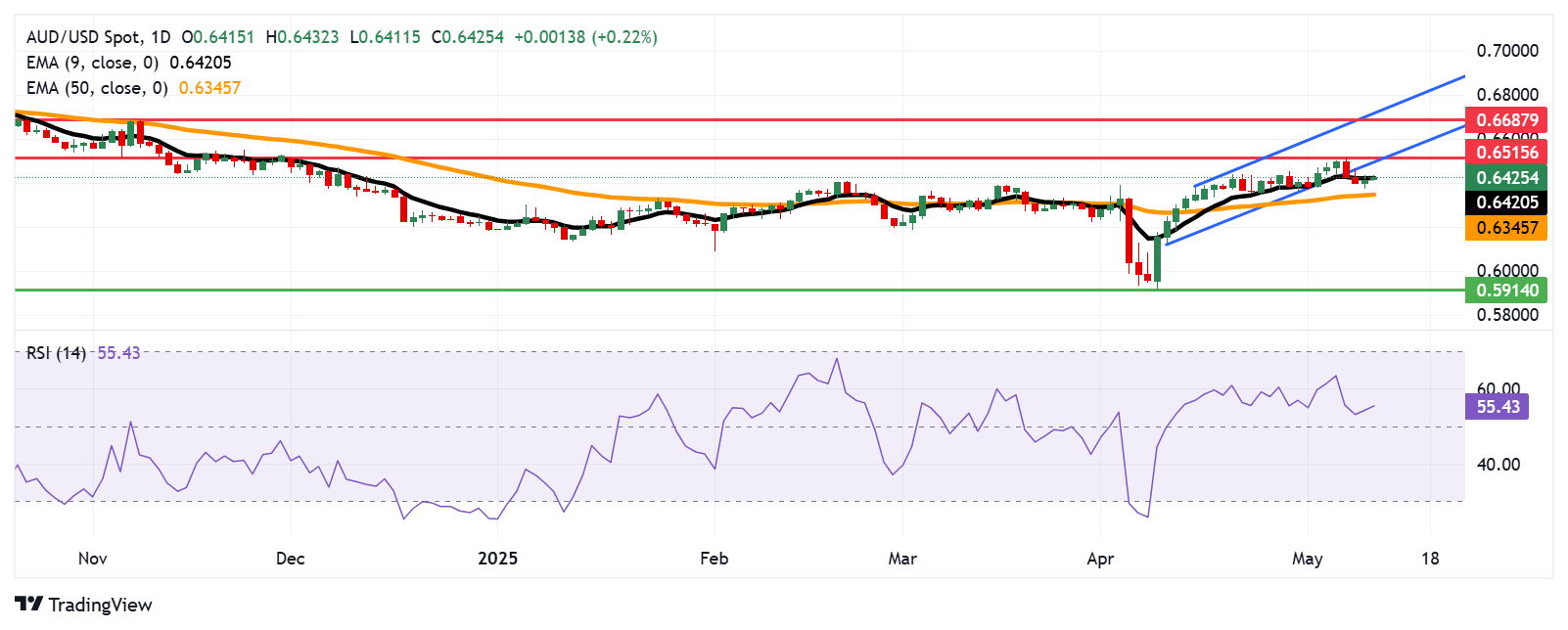Australian Dollar appreciates due to growing optimism after two-day US-China discussion

- The Australian Dollar is gaining support amid rising optimism over the US-China trade talks in Geneva.
- China’s Vice Premier He Lifeng called the negotiations “an important first step” toward stabilizing relations between the two countries.
- US Treasury Secretary Bessent and Trade Representative Greer described the talks as a step toward reducing the $400B trade imbalance.
The Australian Dollar (AUD) is building on its recent momentum, rising against the US Dollar (USD) for a second straight session on Monday. The AUD/USD pair is benefiting from growing optimism around the US-China trade talks held in Geneva. As Australia maintains strong economic ties with China, developments in the Chinese economy often have a direct influence on the AUD.
After two days of negotiations aimed at easing trade tensions, both the US and China reported “substantial progress.” China’s Vice Premier He Lifeng described the talks as “an important first step” toward stabilizing bilateral relations. Meanwhile, US Treasury Secretary Bessent and Trade Representative Greer called the discussions a constructive move toward narrowing the $400 billion trade imbalance.
Adding to the focus on China, President Xi Jinping is set to speak at the opening ceremony of the fourth ministerial meeting of the China-CELAC Forum in Beijing on May 13.
Looking ahead, traders are eyeing key Australian economic releases, including May’s Westpac Consumer Confidence and April’s NAB Business Conditions, both scheduled for Tuesday, which could offer fresh cues for the AUD. Investors are also focused on upcoming US data, with consumer inflation figures due Tuesday, followed by Retail Sales and Producer Price Index data on Thursday, as they gauge the early impact of the trade dispute on the broader economy.
Australian Dollar advances due to progress in US-China trade talks
- The US Dollar Index (DXY), which measures the US Dollar against a basket of six major currencies, is declining for a second consecutive day, hovering around 100.60 at the time of writing. However, the US Dollar found some support after the Trump administration reported progress in trade talks with China over the weekend in Switzerland.
- Treasury Secretary Scott Bessent called the two-day discussions in Geneva with Chinese officials “productive,” adding that more information would be provided in a Monday morning briefing. At present, China is contending with US tariffs of 145%, while Beijing has responded with a 125% tariff on American exports.
- Meanwhile, Commerce Secretary Howard Lutnick stated that the 10% baseline tariff applied to other countries is expected to “remain in place for the foreseeable future.”
- Last week, the Federal Reserve (Fed) left interest rates unchanged at 4.25%–4.50%, but its accompanying statement highlighted rising concerns about inflation and unemployment, adding a layer of uncertainty to the market outlook.
- Fed Chair Jerome Powell, in a post-meeting press conference, warned that ongoing trade tariffs could hinder the central bank’s efforts to manage inflation and employment in 2025. He also suggested that persistent policy instability may prompt the Fed to take a more cautious, wait-and-see approach to future rate moves.
- China’s Consumer Price Index (CPI) declined for the third consecutive month in April, falling 0.1% year-on-year, matching both the market forecast and the drop recorded in March, according to data released Saturday by the National Bureau of Statistics. Meanwhile, the Producer Price Index (PPI) contracted 2.7% YoY in April, steeper than the 2.5% drop in March and below the market expectation of a 2.6% decline.
- On the trade front, China posted a trade surplus of $96.18 billion in April, exceeding the forecast of $89 billion but down from March’s $102.63 billion. Exports rose 8.1% YoY, outperforming the expected 1.9% but slowing from the 12.4% gain seen previously. Imports dipped 0.2% YoY, a milder decline than both the forecasted -5.9% and March’s -4.3%. China’s trade surplus with the US narrowed to $20.46 billion from $27.6 billion in March.
- In the property sector, Beijing is reportedly weighing a major reform that would prohibit the pre-sale of homes and restrict transactions to completed properties. The proposed regulation, aimed at bringing stability to the real estate market, would apply to future land sales, excluding public housing, with implementation left to local governments.
- Australia’s Ai Group Industry Index showed improvement in April, although it marked the 33rd straight month of contraction—particularly driven by weakness in export-reliant manufacturing. These signs of persistent softness have strengthened market expectations that the Reserve Bank of Australia (RBA) may cut its cash rate by 25 basis points to 3.85% later this month.
Australian Dollar could fall toward 0.6400 after breaking below nine-day EMA
The AUD/USD pair is trading around 0.6420 on Monday. The technical analysis of the daily chart suggests a neutral bias as the pair has maintained its position below the ascending channel pattern. However, the 14-day Relative Strength Index (RSI) remains comfortably above 50, suggesting bullish bias is still in play.
On the upside, the AUD/USD pair could return to the ascending channel and retest the six-month high at 0.6515, reached on December 2, 2024. A break above this level could support the pair to approach the seven-month high of 0.6687, which was reached in November 2024. Further support appears at the upper boundary of the ascending channel around 0.6730.
The AUD/USD pair is testing its initial support at the nine-day EMA at 0.6420, followed by the 50-day EMA at 0.6345. A breach below these levels could weaken the bullish outlook and may expose the pair to 0.5914, the lowest since March 2020.
AUD/USD: Daily Chart

Australian Dollar FAQs
One of the most significant factors for the Australian Dollar (AUD) is the level of interest rates set by the Reserve Bank of Australia (RBA). Because Australia is a resource-rich country another key driver is the price of its biggest export, Iron Ore. The health of the Chinese economy, its largest trading partner, is a factor, as well as inflation in Australia, its growth rate and Trade Balance. Market sentiment – whether investors are taking on more risky assets (risk-on) or seeking safe-havens (risk-off) – is also a factor, with risk-on positive for AUD.
The Reserve Bank of Australia (RBA) influences the Australian Dollar (AUD) by setting the level of interest rates that Australian banks can lend to each other. This influences the level of interest rates in the economy as a whole. The main goal of the RBA is to maintain a stable inflation rate of 2-3% by adjusting interest rates up or down. Relatively high interest rates compared to other major central banks support the AUD, and the opposite for relatively low. The RBA can also use quantitative easing and tightening to influence credit conditions, with the former AUD-negative and the latter AUD-positive.
China is Australia’s largest trading partner so the health of the Chinese economy is a major influence on the value of the Australian Dollar (AUD). When the Chinese economy is doing well it purchases more raw materials, goods and services from Australia, lifting demand for the AUD, and pushing up its value. The opposite is the case when the Chinese economy is not growing as fast as expected. Positive or negative surprises in Chinese growth data, therefore, often have a direct impact on the Australian Dollar and its pairs.
Iron Ore is Australia’s largest export, accounting for $118 billion a year according to data from 2021, with China as its primary destination. The price of Iron Ore, therefore, can be a driver of the Australian Dollar. Generally, if the price of Iron Ore rises, AUD also goes up, as aggregate demand for the currency increases. The opposite is the case if the price of Iron Ore falls. Higher Iron Ore prices also tend to result in a greater likelihood of a positive Trade Balance for Australia, which is also positive of the AUD.
The Trade Balance, which is the difference between what a country earns from its exports versus what it pays for its imports, is another factor that can influence the value of the Australian Dollar. If Australia produces highly sought after exports, then its currency will gain in value purely from the surplus demand created from foreign buyers seeking to purchase its exports versus what it spends to purchase imports. Therefore, a positive net Trade Balance strengthens the AUD, with the opposite effect if the Trade Balance is negative.




